Vision
Truly smart mobility makes people smart and improves engagement
Our smart bus shelter is an enabler of effective communication between the city and the public.
Information is of value if communicated appropriately. The information displayed in a bus shelter can create awareness of the happenings around the city which creates interest for the commuter.
In addition, it is the means to educate the people on topics like green thinking, reskilling, cyber hygiene, etc. Inform and engage the public about the progress that the city has made in these areas. In summary – it provides the tools to improve public engagement and satisfaction.

Value of Smart Bus Shelters
One of the common value adding aspect of the smart bus shelter is in the sense that it is an enabler of effective communication of the city to the public. Information is usually of value if communicated and utilized appropriately. The information displayed in a bus shelter can create awareness of the happenings around the city which creates interest for the commuter.
The value added can be looked at from two following perspectives:
User perspective
The user refers to the public transport commuter or a pedestrian that interacts with the smart bus shelter. Relevant information about the city can be of value to the user in terms of saving costs. From the user perspective, another key aspect that comes into play is the user experience in a bus shelter while waiting for the bus.
Stakeholder perspective
The stakeholders are the public transport provider, businesses and institutions that rely on smart bus shelters to convey information to the commuters. Public transport providers consider services that convey traffic information such as a real-time update of the bus position or the estimated time of arrival. Businesses and institutions on the other hand invest in public announcements of events, or advertisement of local sales or offers.

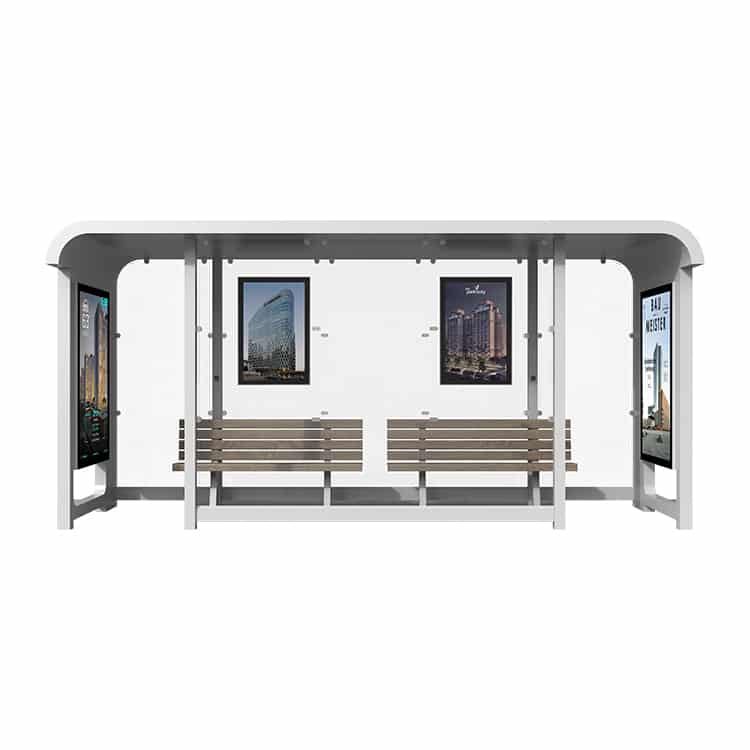
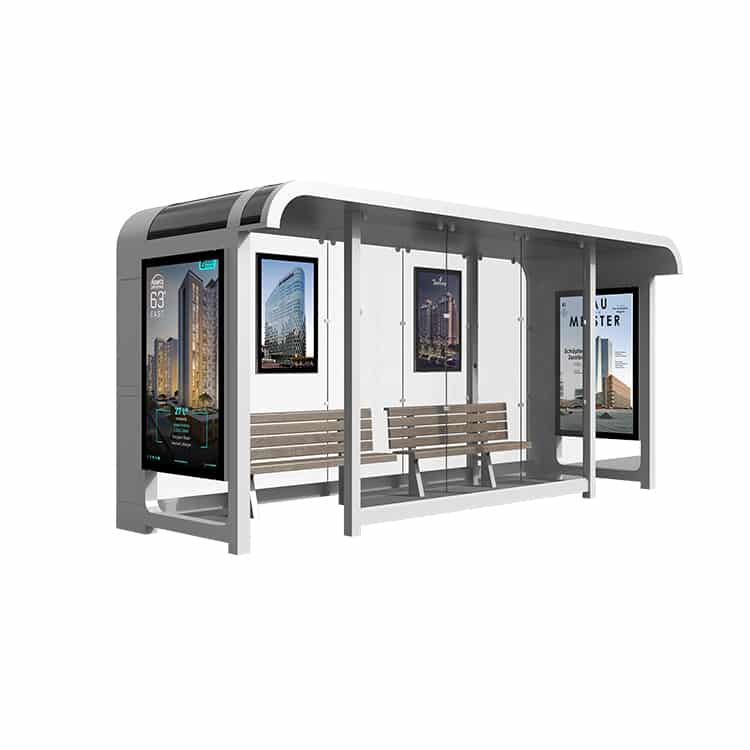
IoT (Internet of Things ) sensors integration
The integration of Iot in the smart bus shelter involves the use of sensors that collect contextual data from the commuters as well as the environment. Such data can be useful in the system‟s decisions making, when it comes to what content is displayed on the screens.
This results in a context-aware system that optimises the relevance of information displayed, at a given time, location and for specific commuters in a bus shelter.
Various use case scenarios may be adapted where commuters can be engaged in a smart bus shelter. This enables to investigate the value-adding aspects of IoT both in the user’s (commuter’s) perspective and in the business perspective.
The content that is displayed can be:
- Location based – implying that it concerns businesses and institutions within the surrounding location of the bus shelter, and,
- time based – given that the information is relevant at a particular time, for instance, an advertisement for a lunch offer taking place in a nearby restaurant is displayed a few hours before lunch hour.
The integration of IoT in bus shelters enables transport providers to analyze data that can reflect the movement of commuters in the city at different times. The information is useful to optimize bus allocation thus reduce buffer times.
The use of IoT enables advertisers determine how effectively information is conveyed by identifying the potential number people that view the message in a public space such as the bus shelter.
Incorporate range of sensors that collect and visualise data to commuters for example air pollution or weather information. In addition it gives possibilities to monitor of air quality and noise levels.
Interactive and conditional advertising
Smart advertising based on interaction and conditions emphasises involvement of the audience, taking into account the viewer‟s entire sensory experience. For example mr. Hao Huang in his thesis “New medium of advertising in the future use of interactive installation” observed that interactive installments in public spaces tend to capture the attention of more passing-by audience. The display screens are affected by the presence of a person, they activate when someone passing by is detected. Interactivities of interactive installation give consumers more control by giving them a range of choices in their experience with product information. And it produces a sense that the communication is more personal than traditional media ads.
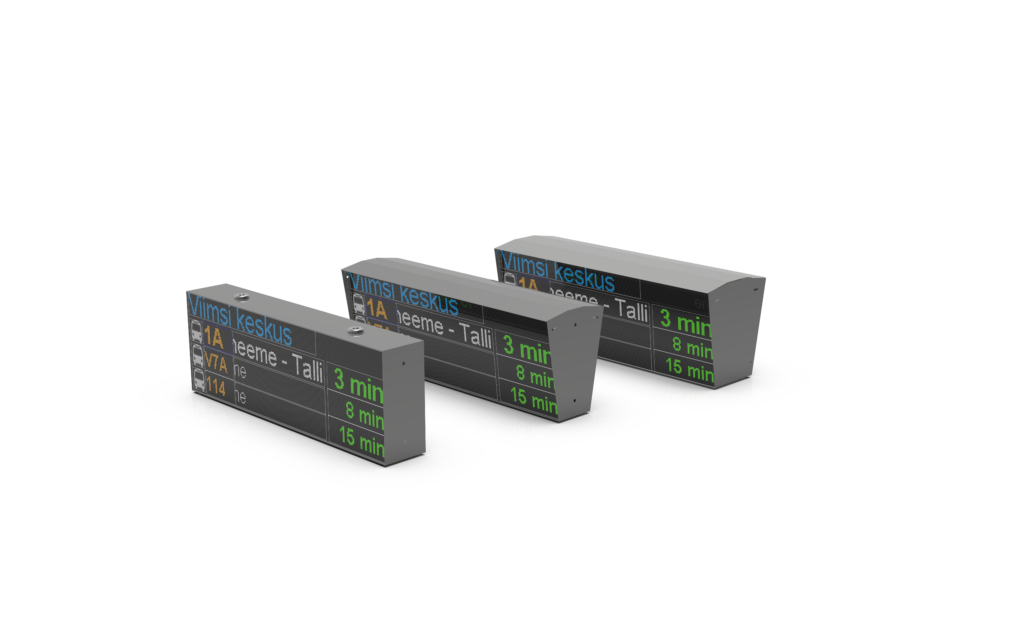
Integrated Parcel Locker
In cooperation with Cleveron we provide a parcel locker integrated into our bus shelter. The outdoor parcel locker offers a 24/7 human contactless pickup service, allowing companies to continue sales activities even when brick and mortar stores are closed. Cleveron 351 delivers goods to clients without additional shipping costs. Designed for small and medium-sized businesses with an established online store. See more technical information on their product page.
USB and Wireless Charging for smartphones
According to recent studies, 77% of adults now have access to a smartphone. As many of us know, the numerous features of such powerful devices result in a battery which can quickly deplete. Providing the charging possibility increases user satisfaction and added value for commuters.
Sound effects in Smart Bus Shelter
Speakers are ideal for both transport information and digital out of home advertising (DOOH). Help your advertisers get their message across. Advertisements may be accompanied by the sound effects. Improve your communication with passengers.
- An audio option for Real-Time Bus Information Systems. Assist visually impaired
- Sound for enhanced interactivity with digital signage. Attract attention to bus shelter ads
- Controllable sound. No “TOO LOUD hot spots”, no sound pollution
- Simple to integrate with buttons, motion detectors and beacons
- Accessibility Improvements for visually and hearing impaired
Smart Bus Shelter digital content management software
Ampron has developed Intelligent Public Information Smartcity Digital Signage Software Solution. It enables managing displays and publishing contents with ease. It is comprehensive hardware and software solution for management of LED digital signage and message board networks to publish bus estimated time of arrival, information from sensors or other sources, emergency notification, ad contents and many more in real-time.
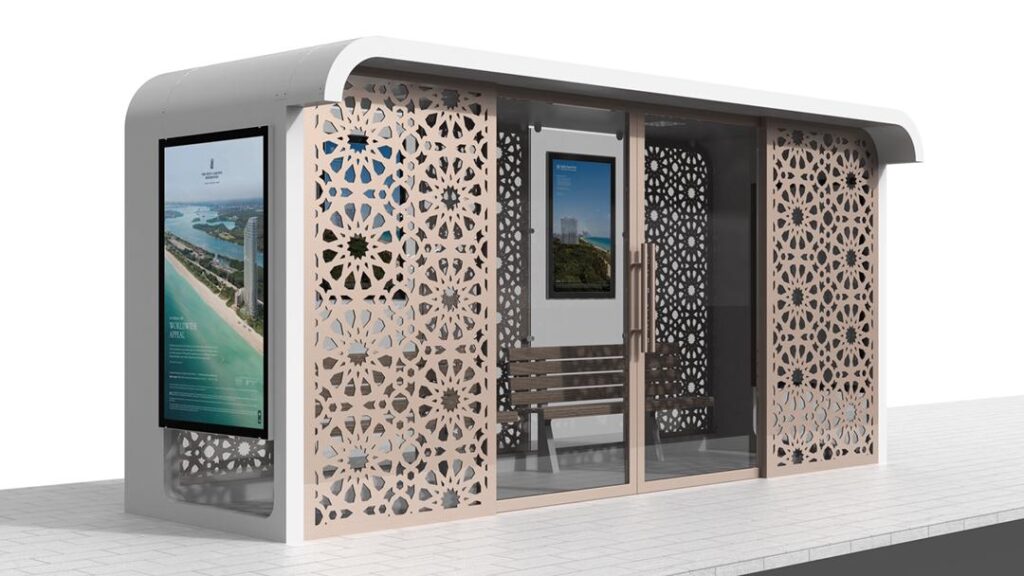
Summary
Dependency on oil to fuel our daily mobility patterns and the unnecessary use of private cars for short trips need to be reduced if cities are to achieve cleaner air and liveable urban environments.
Installing more user-centric smart bus shelters might be one of the measures to stimulate less-car-intensive lifestyles and improves communication between travelers and the municipality.
It contributes in creating more suitable conditions for alternative transport solutions and facilitating a shift in mentality to promote public transport usage.
Making our cities smarter offers the potential to greatly increase both the efficiency and capacity of existing networks and the ability to plan and build new networks that are best place to meet future needs.
Our smart bus shelter can be installed in any part of the city or municipality. With its flexibility and tailored adaptation, it can easily and effectively fulfil a large number of assigned tasks and thus improve the quality of life of citizens.
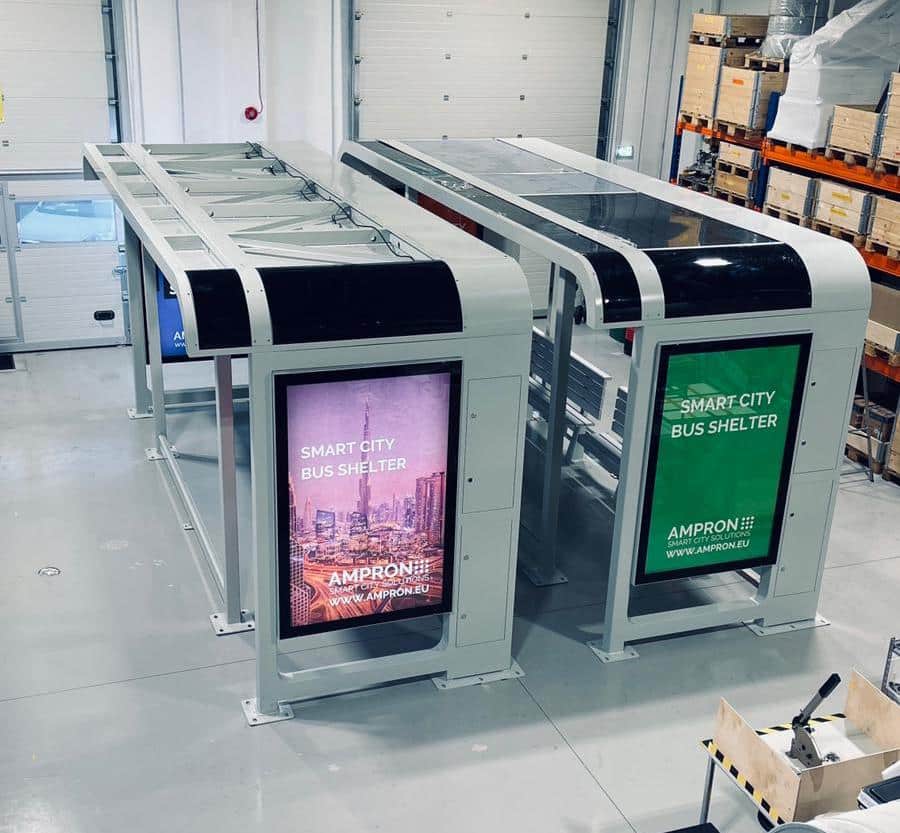
More Information
Download the booklet for information about pricing and project summary.

